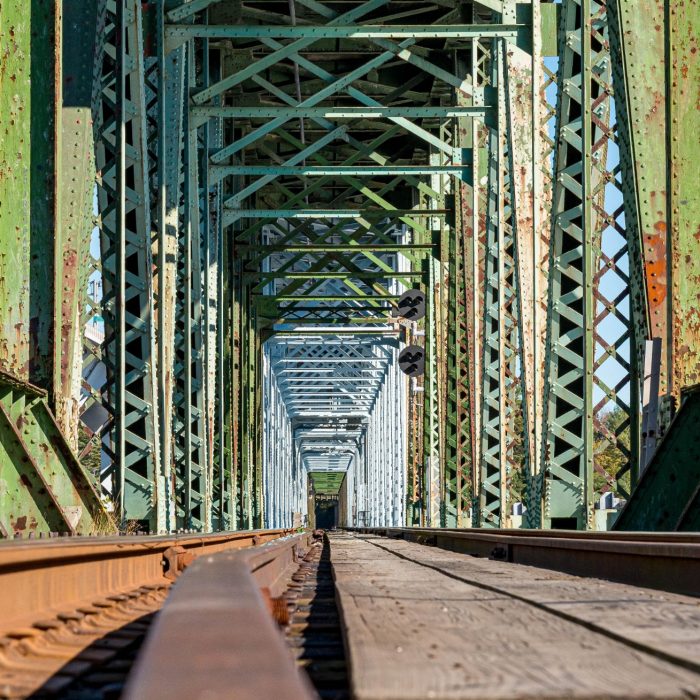Resilient infrastructure - now and for the future

The challenge
More than ever, we depend on critical infrastructure systems to provide essential energy, water, transport and communications services, as well as our food, healthcare and education.
With exposure to an ever-increasing range of hazards, risks, and threats - from cyber and physical attacks to the impacts of climate change - the ability of infrastructure systems to absorb disturbance and retain basic function and structural capacity is vital.
Improving infrastructure resilience can reduce the risk and impact of a disaster and assist the recovery process, dramatically reducing physical, social and economic losses.
The solution
Natural disasters, extreme weather events, the changing climate and man-made hazards have destructive and devastating consequences on human society and the natural environment. Critical infrastructure often sustains a high amount of damage as a result of these events.
Our research supports adaptation to ensure critical building and transport infrastructure projects can withstand significant and unexpected changes in the social and physical environment within which they’re designed, built and operated, beyond the normal day-to-day demands of their strengths and capacities. Our main research topics are:
- development of new resilient structures using advanced protective systems and new materials such as high strength steel, polymers, ceramics, auxetics and fabrics
- planning, design and management of sustainable and resilient transportation systems to guarantee a timely response to natural or man-made disruptions
- development of efficient and effective solutions to technological challenges against natural and man-made threats such as gas explosions, improvised explosive devices, combined impact and base loading, vehicle collisions and hail damage
- development of advanced simulation, validated numerical platforms, and finite element analysis codes and the provision of a wide range of consultations and training opportunities to relevant stakeholders
- provision of risk management and modelling, and innovative protection solutions to improve the resilience of geotechnical structures such as bridges, tunnels and dams.
The impact
Resilient Infrastructure research at UNSW Canberra focuses on the design, operation, maintenance and protection of infrastructure to mitigate disaster risks that arise from a variety of hazards.
Our team of experts have developed significant research capability in vulnerability modelling and assessing the effects of man-made, cyberspace and natural hazards on buildings and critical infrastructure.
We aim to ensure infrastructure systems can withstand, adapt to and recover quickly from anticipated or unexpected shocks and stresses - now and in the future.
Successful applications
Our team of experts also apply their research outcomes for solving practical infrastructure resilient problems. Some recent successful applications are:
- development of Structural safety guidelines for accidental hydrogen explosion hazard - ARC Discovery Project funding (2023-2025)
- experimental and numerical studies on combined blast and fragments effects on steel and steel-concrete sandwich structures for foreign decision-makers
- probing the blast and ballistic performance of a new fast-jet bunker design for a foreign entity
- successful engagement of designing protective structures and critical infrastructures in key development projects
- successful development of a numerical framework to predict the simultaneously detonated multiple charge interactions within a confined volume
- numerical modelling of vehicle crash analysis of Captain-Cook and Iron Bark Bridges (NSW)
- impact assessment of falling girders on steel protective beam system - Level crossing removal project, Melbourne
- probabilistic based design method will affect the design philosophy of geotechnical structures considering the variation of soil and environmental impact.
The impact
Resilient Infrastructure research at UNSW Canberra focuses on the design, operation, maintenance and protection of infrastructure to mitigate disaster risks that arise from a variety of hazards.
Our team of experts have developed significant research capability in vulnerability modelling and assessing the effects of man-made, cyberspace and natural hazards on buildings and critical infrastructure.
We aim to ensure infrastructure systems can withstand, adapt to and recover quickly from anticipated or unexpected shocks and stresses - now and in the future.
Successful applications
Our team of experts also apply their research outcomes for solving practical infrastructure resilient problems. Some recent successful applications are:
- development of Structural safety guidelines for accidental hydrogen explosion hazard - ARC Discovery Project funding (2023-2025)
- experimental and numerical studies on combined blast and fragments effects on steel and steel-concrete sandwich structures for foreign decision-makers
- probing the blast and ballistic performance of a new fast-jet bunker design for a foreign entity
- successful engagement of designing protective structures and critical infrastructures in key development projects
- successful development of a numerical framework to predict the simultaneously detonated multiple charge interactions within a confined volume
- numerical modelling of vehicle crash analysis of Captain-Cook and Iron Bark Bridges (NSW)
- impact assessment of falling girders on steel protective beam system - Level crossing removal project, Melbourne
- probabilistic based design method will affect the design philosophy of geotechnical structures considering the variation of soil and environmental impact.
"Most of our research efforts are aimed at keeping people safe and protecting them from both natural and human-caused disasters. As a team, we want to see structures withstand severe loading, whether they’re induced by human-caused events or natural disasters. The team is passionate about developing better design techniques for structures to survive under such extreme loading.”
Damith Mohotti, Chartered Structural Engineer (EA) and Senior Lecturer
Related people and partners
-
National bodies
- Defence Science and Technology Group (DSTG)
- International Association of Protective Structures (Australian Chapter)
- Research Network for a Secure Australia (RNSA)
Australian universities
- University of Melbourne
- University of Wollongong
- University of Sydney
- University of Technology Sydney
- Macquarie University
- Western Sydney University
Overseas research partners
- Monash, Malaysia
- University of Moratuwa, Sri Lanka
- Nanyang Technological University, Singapore
- Defence Science and Technology Agency, Singapore
- University of Leeds
- Queen Mary University of London
- Fraunhofer Institute for High-Speed Dynamics, Ernst-Mach-Institut (EMI), Germany
Industrial partners
- Bisalloy
- Veolia Environmental Services (Australia) Pty Ltd










